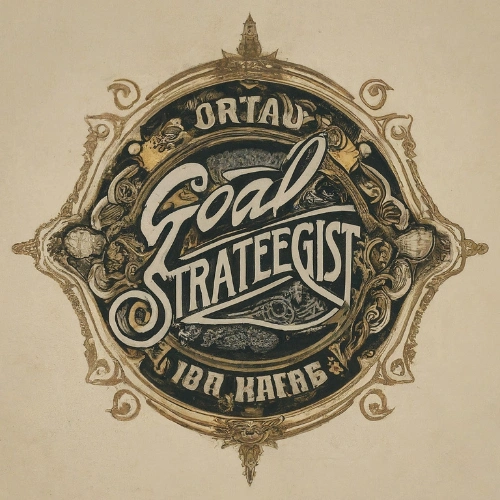Feminist literary criticism isn’t just about demanding equality in the dusty shelves of a library. It’s a robust tool that digs deep into literature to unearth the representation of women and challenge the patriarchal status quo. By scrutinizing texts through this lens, you uncover layers you might’ve missed at first glance.
One key goal is to amplify women’s voices that have been muted by history. You’re not just reading between the lines; you’re rewriting them to spotlight female perspectives long overshadowed. Another is to dissect how literature shapes our understanding of gender roles. It’s like being a detective, but instead of solving crimes, you’re unraveling cultural constructs. Dive in, and you’ll see how feminist literary criticism is reshaping the narrative, one page at a time.
Amplifying Muted Voices
Feminist literary criticism is pivotal in bringing women’s perspectives to the forefront of literary discourse. Historically, literature has often reflected the dominant patriarchal views, leaving women’s experiences and voices on the fringes. Your understanding of this form of criticism isn’t just about identifying these overlooked narratives but is fundamentally about raising their volume in the canon of literary studies.
Imagine reading a text where the female characters only serve as adornments or plot devices for their male counterparts. Feminist criticism digs beneath this surface to unveil the underlying female experiences and the complexities of their characters. By doing so, it grants validity and space to narratives that challenge the traditional male-centric viewpoint. It’s not just about critiquing; it’s about counterbalancing the existing narrative inequity and ensuring that silenced voices are heard, thus enriching the tapestry of literary understanding.
- Revisiting Classics: Feminist criticism encourages a revisitation of classic texts to uncover suppressed female voices.
- Highlighting Contemporary Works: It also pushes contemporary women’s literature into the spotlight for critical acclaim and scholarly discussion.
This goal of feminist literary criticism is thus twofold. It not only seeks to highlight literary works by women that may have been ignored by mainstream criticism but also aims to reinterpret texts from a feminist perspective. This reexamination is essential because it reveals the multiple layers of interpretation possible when viewed through the lens of gender. You’ll find that characters and plots acquire new dimensions when the focus shifts to the representation and agency of women.
The process involves a rigorous analysis of language, form, and narrative strategies used to either suppress or illuminate women’s lives. Gender dynamics become more evident as feminist criticism meticulously peels back the layers of meaning within the text. Such scrutiny is imperative for a balanced understanding of literature and its influence on cultural and social attitudes toward gender.
For you, the reader or scholar, this aspect of feminist literary criticism isn’t just academic. It’s part of a broader movement towards equality and representation, where every voice has the right to be heard, acknowledged, and valued in the literary world.
Rewriting the Narrative
In the journey through feminist literary criticism, you’ll find that Rewriting the Narrative is a pivotal goal. This doesn’t merely entail giving old tales a fresh coat of paint; it’s about digging deep into the subtext of stories that have shaped societies’ views on gender roles for centuries. Your approach should be analytical, peeling back the layers of historical context to reveal the hidden biases within.
- Examine Characterization
Literary works often marginalize female characters or confine them to traditional roles. As you delve into the texts, look for instances where female characters are not fully realized or are merely supporting the arc of male characters. The goal is to reintroduce these characters with complexity and agency, ultimately reshaping the narrative to reflect a more equitable stance. - Challenge Traditional Plots
Traditional plots frequently sideline the ambitions and desires of women. Examine how these storylines could be reimagined to foreground women’s experiences. For example, ask yourself how a classic like “The Great Gatsby” would change if Daisy Buchanan’s perspective and autonomy were given more prominence, flipping the narrative to question societal norms rather than just depict them.
In examining language and narrative style, your focus should identify and alter the nuances that historically undervalued women’s voices. It’s essential to scrutinize not just what is said but how it’s said. The subtleties of language can imply power dynamics and societal expectations; thus, reframing this language is a form of empowerment.
Furthermore, by highlighting the works of contemporary women writers and giving them the critical attention they deserve, you contribute to a literary landscape that values diversity and inclusivity. It’s not just about rewriting the old but also about championing the new. Acknowledging the breadth of women’s experiences and the richness they bring to literature helps construct a more nuanced and representative literary canon.
Unraveling Cultural Constructs
You’ve been exploring the intricate landscape of feminist literary criticism, where every word and narrative turn can reveal layers of gendered meaning. Now, consider how cultural constructs shape your understanding of literature. Cultural constructs are the social and cultural expectations that define gender roles, dictating how individuals should behave based on their perceived gender. Feminist literary criticism seeks to identify and dissect these constructs within texts, aiming to expose their artificial nature.
In your journey through texts of various eras, you’ll find that authors often project their societal norms onto their characters. Women are frequently confined to roles such as the obedient wife, the nurturing mother, or the passive beauty. These prescribed roles reflect the limitations placed on women outside the literary world. When you delve into feminist criticism, you’re equipped to:
- Challenge the normative aspects of femininity and masculinity
- Explore how characters can transcend their traditional roles
- Question the power dynamics that these roles reinforce within the narratives
By doing so, you start to untangle the web of cultural expectations and provide alternative viewpoints. You’re not just reading a story; you’re questioning the very fabric of the narrative’s reality.
Feminist literary criticism not only unpacks the existence of these constructs but also scrutinizes how they came to be. What historical, political, or economic factors contributed to these roles becoming the norm? This criticism paves the way for readers like you to understand the multiplicity of influences that literature encompasses.
Remember, the goal isn’t to merely identify these constructs but to interrogate them, examine their evolution, and explore their impact on both the creation and consumption of literary works. Each book, poem, or play offers a unique opportunity to dissect the layers that constitute the characters’ realities, and in effect, the realities within our society.
Shaping Understanding of Gender Roles
As you delve deeper into the realms of feminist literary criticism, you’ll uncover its instrumental role in shaping our understanding of gender roles. Traditionally, literature has often mirrored the gender norms of its time, presenting characters and situations that reinforce stereotypical gender roles. Feminist literary criticism challenges these norms, offering new perspectives on both the characters and the plots.
Consider how female characters have historically been confined to roles that emphasize passivity, purity, or domesticity. In contrast, their male counterparts frequently embody traits such as assertiveness, autonomy, and courage. Feminist literary criticism scrutinizes these dichotomies, pushing readers to reconsider gender-based assumptions. This form of criticism reveals the underlying power structures that favor masculine perspectives and marginalize feminine ones.
By analyzing literature through a feminist lens, you’re not just passively consuming a narrative—you’re actively engaging with the text to decode the gender roles it portrays. This approach encourages the examination of:
- The language used to describe male and female characters
- The distribution of power and agency between genders
- The societal expectations placed on characters based on their gender
Take, for example, the character portrayal in classic literature. Often, you’ll find that female characters’ desires and ambitions are secondary to those of their male counterparts. Feminist criticism urges a critical assessment of how these portrayals reflect and shape societal norms about gender.
Moreover, by questioning traditional gender roles in literature, feminist critics aim to transcend binary constructs. They advocate for a spectrum of gender identities and expressions, anticipating a ripple effect that goes beyond the literary world into your everyday life.
The goal here is not simply to catalogue instances of entrenched gender roles but to disrupt them, allowing for a more inclusive and nuanced portrayal of human experience. As you grapple with these concepts, remember that feminist literary criticism doesn’t just interpret a text—it reconstructs it, advocating for a rebalancing of narrative power that has long-term implications for authors, readers, and society at large.
Reshaping the Narrative, One Page at a Time
Feminist literary criticism doesn’t just provide a lens through which to view literature; it actively works to reshape narratives. By deconstructing gender biases and stereotypes embedded in texts, these critics carve space for underrepresented voices. They advocate for stories where women are not just supporting characters but crucial, complex protagonists.
This approach involves re-reading well-known works through a feminist perspective. You’ll find that narratives you thought you knew unfold in unexpected ways, showing layers you might’ve missed. For example, feminist critics might highlight how female characters in classic novels are constrained by social norms and often robust yet overlooked. It compels readers to question the so-called ‘universal truths’ presented by a traditionally male-dominated literary canon.
It’s also about promoting works that are lost in a literary world where male voices have been louder. Feminist literary criticism uncovers gems by women writers who, for too long, didn’t get their due. It brings to light stories where female voices are central, offering vibrant experiences and perspectives. By doing so, it disrupts the narrative and enriches literature with diverse, emboldened female characters.
Think of it as an ongoing revision of the literary world, making it more inclusive with every analysis. Every book, essay, or poem approached through this lens adds another layer to the dialogue, deepening our understanding of gender in literature. As these critiques and perspectives gain ground, new generations of readers and writers are influenced, making the leap from the text to the world. They’re not just reading words on a page; they’re witnessing a challenge to the status quo and an invitation to imagine a more equitable literary landscape.
Like peeling back the curtain on the Wizard of Oz, feminist literary criticism reveals the machinations behind character creation and plot development. It looks at how storytelling elements may perpetuate or challenge societal norms—encouraging you to think critically about the messages you’ve absorbed from your favorite books.
Conclusion
You’ve explored the transformative power of feminist literary criticism and its dedication to reshaping the literary landscape. It’s about more than just reading between the lines—it’s a call to action for a more inclusive and equitable representation of gender in literature. By challenging the status quo and amplifying voices that have long been silenced, you’re part of a movement that redefines what stories are told and who tells them. Embrace this critical lens as you dive into your next literary adventure and witness the unfolding of a richer, more diverse world of storytelling.


Leave a Reply